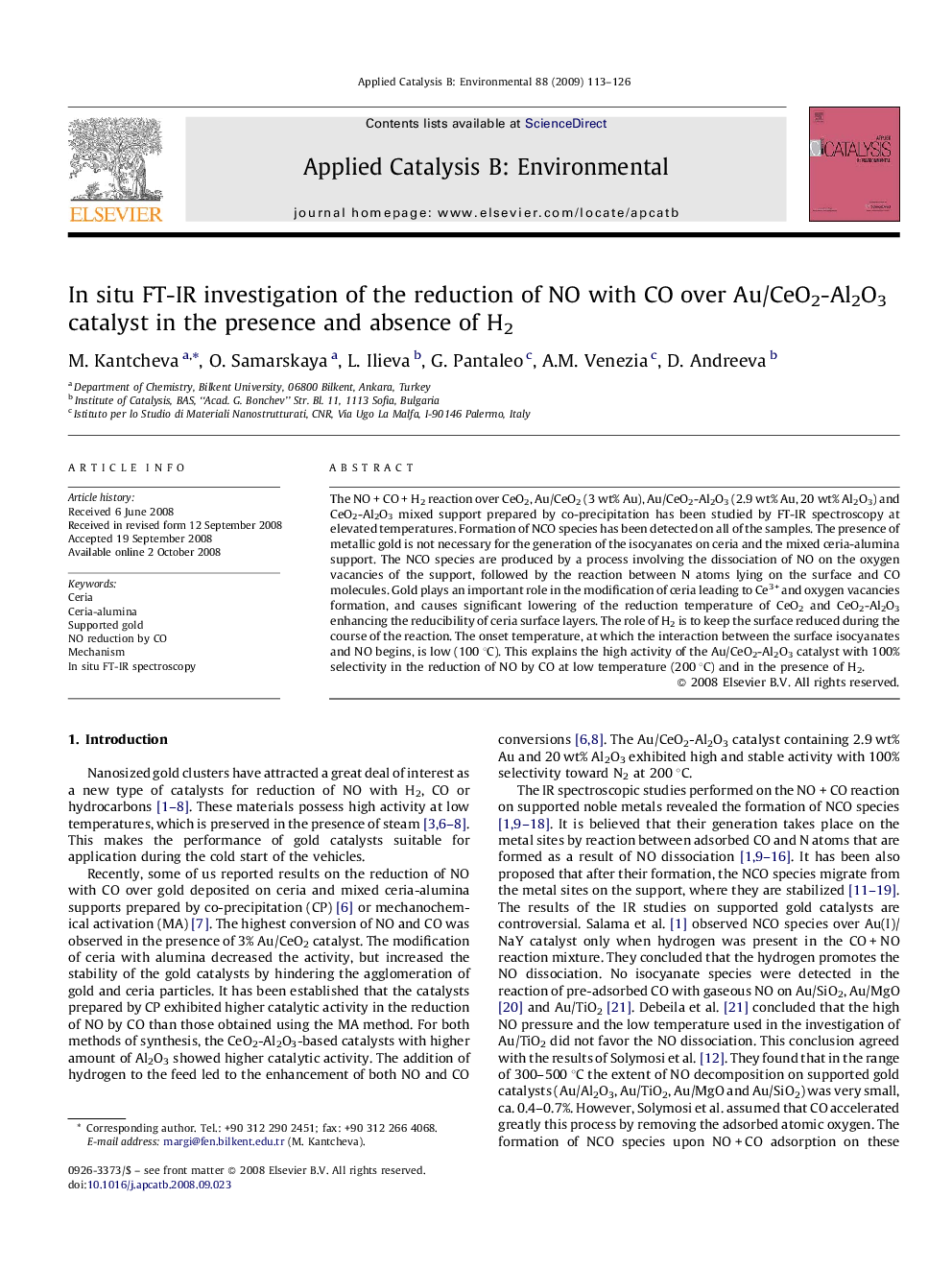| Article ID | Journal | Published Year | Pages | File Type |
|---|---|---|---|---|
| 48128 | Applied Catalysis B: Environmental | 2009 | 14 Pages |
The NO + CO + H2 reaction over CeO2, Au/CeO2 (3 wt% Au), Au/CeO2-Al2O3 (2.9 wt% Au, 20 wt% Al2O3) and CeO2-Al2O3 mixed support prepared by co-precipitation has been studied by FT-IR spectroscopy at elevated temperatures. Formation of NCO species has been detected on all of the samples. The presence of metallic gold is not necessary for the generation of the isocyanates on ceria and the mixed ceria-alumina support. The NCO species are produced by a process involving the dissociation of NO on the oxygen vacancies of the support, followed by the reaction between N atoms lying on the surface and CO molecules. Gold plays an important role in the modification of ceria leading to Ce3+ and oxygen vacancies formation, and causes significant lowering of the reduction temperature of CeO2 and CeO2-Al2O3 enhancing the reducibility of ceria surface layers. The role of H2 is to keep the surface reduced during the course of the reaction. The onset temperature, at which the interaction between the surface isocyanates and NO begins, is low (100 °C). This explains the high activity of the Au/CeO2-Al2O3 catalyst with 100% selectivity in the reduction of NO by CO at low temperature (200 °C) and in the presence of H2.
